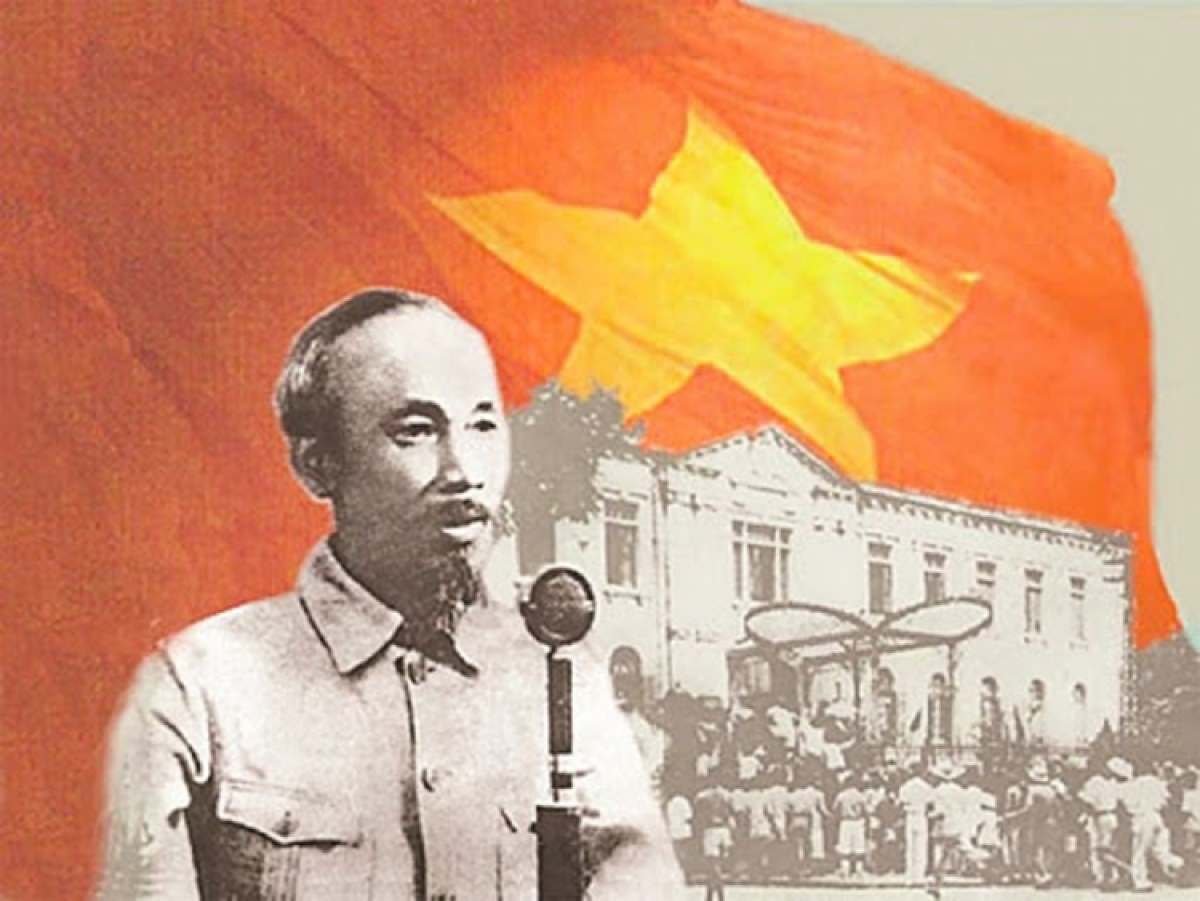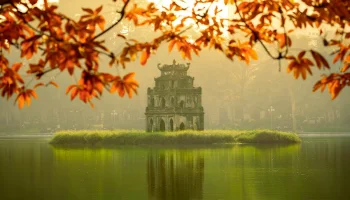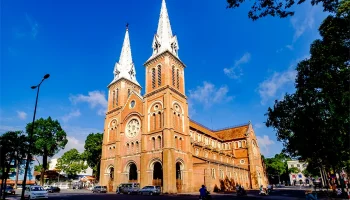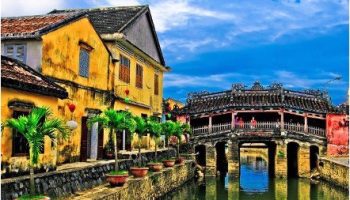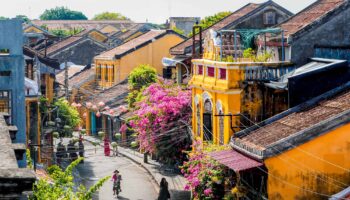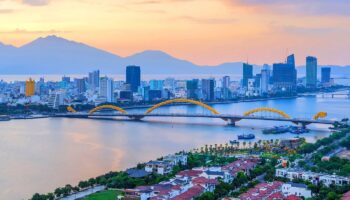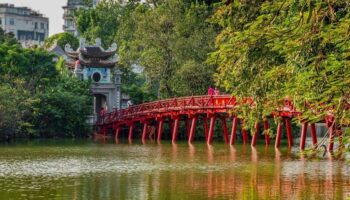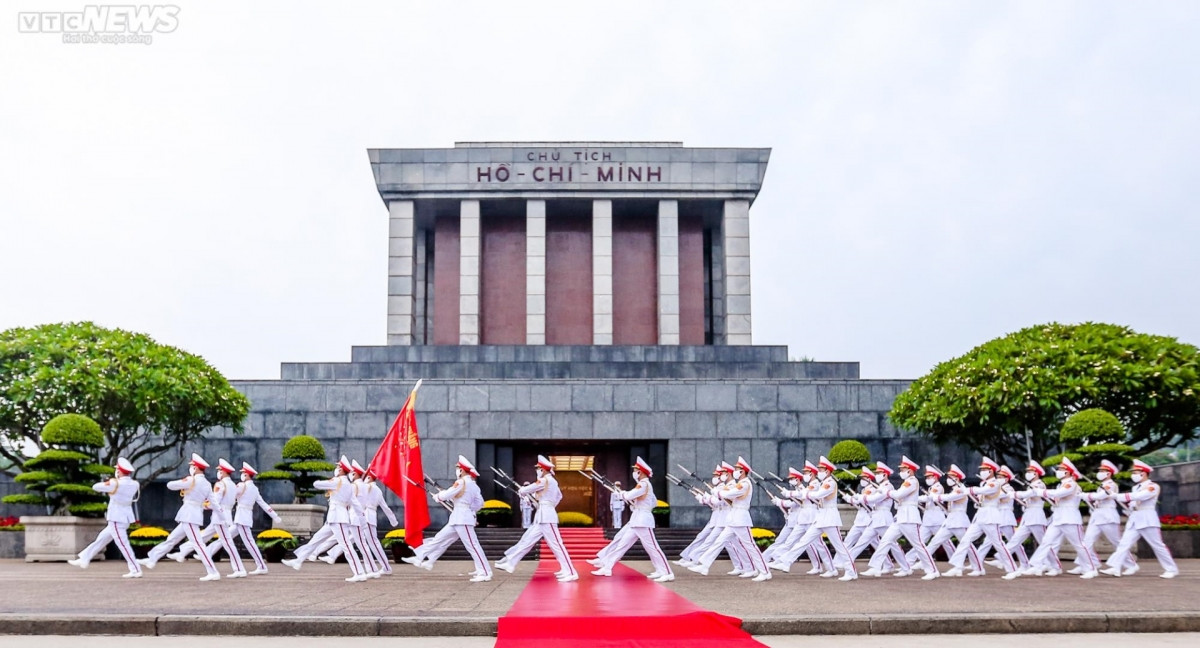
Ho Chi Minh Mausoleum: Do not miss out the greatest historical destination in Vietnam
The Ho Chi Minh Mausoleum in Hanoi is a key cultural and historical site, honoring Vietnam’s revolutionary leader, Ho Chi Minh. Located in Ba Dinh Square, the mausoleum blends traditional and Soviet architectural styles, surrounded by tranquil gardens, offering a reflective experience for visitors.
Table of Contents
ToggleI. The long history of Ho Chi Minh Mausoleum
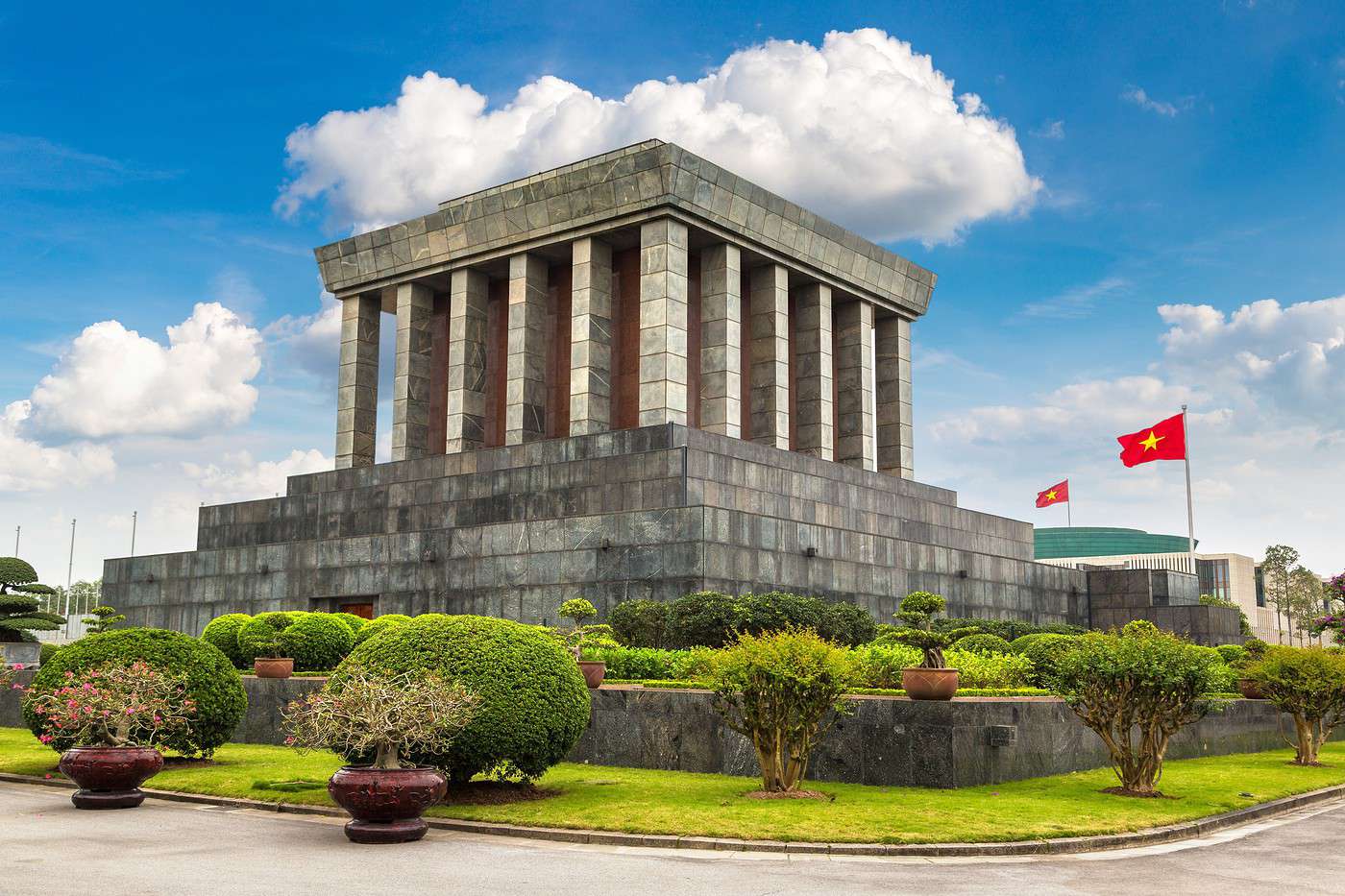
The Ho Chi Minh Mausoleum offers a reflective experience for visitors.
1.1. Background of Ho Chi Minh
Life and Achievements of the Greatest Vietnam Leader
Nguyen Sinh Cung, born on May 19, 1890, in Hoang Tru, Vietnam, played a pivotal role in shaping his nation’s history. He founded the Indochinese Communist Party in 1930 and later led the Viet Minh independence movement in 1941.
On September 2, 1945, he proclaimed Vietnam’s independence, marking a significant moment in the country’s struggle against colonial rule.
As Prime Minister and President of North Vietnam from 1945 to 1969, he led the First Indochina War against French colonial forces, which culminated in the Geneva Accords of 1954. Throughout the Vietnam War, his leadership was crucial in the effort to unify North and South Vietnam.
Role in Vietnam’s History
Ho Chi Minh is considered the father of modern Vietnam. His leadership and vision were vital in securing Vietnam’s independence and shaping its future.
His policies focused on education, land reform, and industrialization, leaving a lasting impact on the country.
1.2 Construction of the Mausoleum
Inception and Construction Timeline
Shortly after his death on September 2, 1969, the concept for a memorial was proposed to honor his legacy. Construction of this monument began on September 2, 1973, at Ba Dinh Square in Hanoi.
The project was a collaborative effort between Vietnamese and Soviet architects and engineers, and it was completed on August 29, 1975.
Architectural Inspiration and Design
Lenin’s Mausoleum inspired the design of the mausoleum in Moscow. It’s a sturdy, rectangular structure of grey granite and red marble.
Inside, Ho Chi Minh’s embalmed body is on display. The design combines Vietnamese and Soviet influences, creating a solemn and respectful atmosphere. The surrounding gardens and Ba Dinh Square make it a peaceful place for visitors to reflect on Ho Chi Minh’s legacy.
II. What makes Ho Chi Minh Mausoleum so special
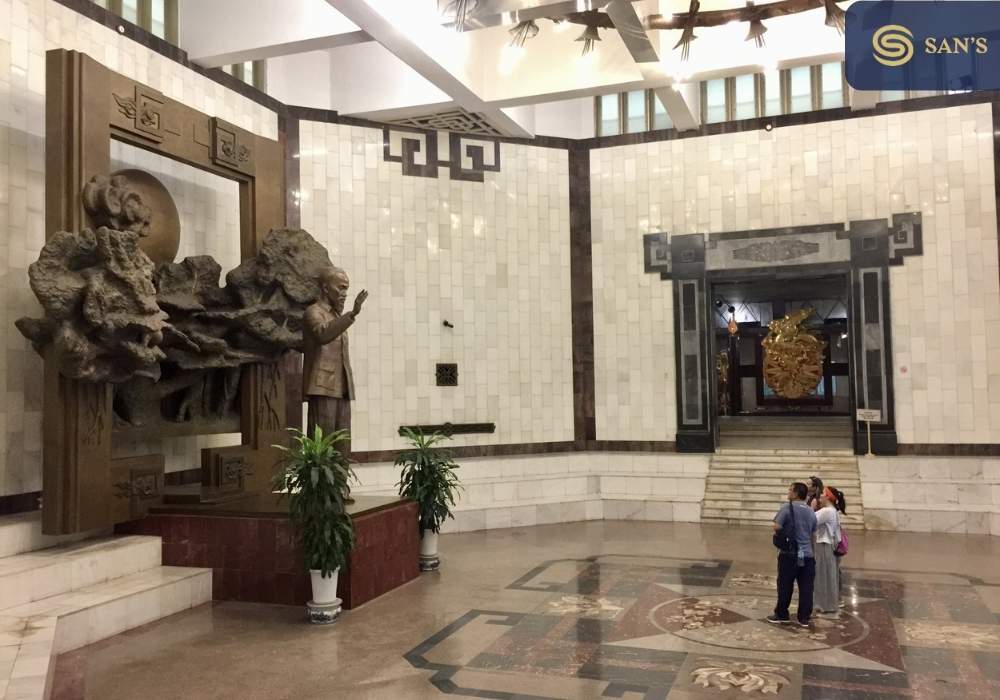
2.1 Final resting place of Ho Chi Minh, the revolutionary leader of Vietnam
President Ho Chi Minh will request cremation with his ashes spread across Vietnam’s three regions. However, the government, honoring the Party’s and people’s wishes, chose to preserve his body in a mausoleum for public homage.
In January 1970, Vietnamese and Soviet officials met to plan the Mausoleum’s design and construction, with approval from the Politburo and significant Soviet expertise.
Construction began on September 2, 1973, and the Mausoleum was inaugurated on May 19, 1975. Inspired by Lenin’s Tomb in Moscow, the design was adapted to fit Vietnamese customs.
The Ho Chi Minh Mausoleum is a significant symbol, representing the Vietnamese people’s deep respect for their leader. Since its opening, it has become a cultural and historical landmark in Hanoi, attracting numerous Vietnamese and international visitors.
2.2 Description of the mausoleum’s exterior
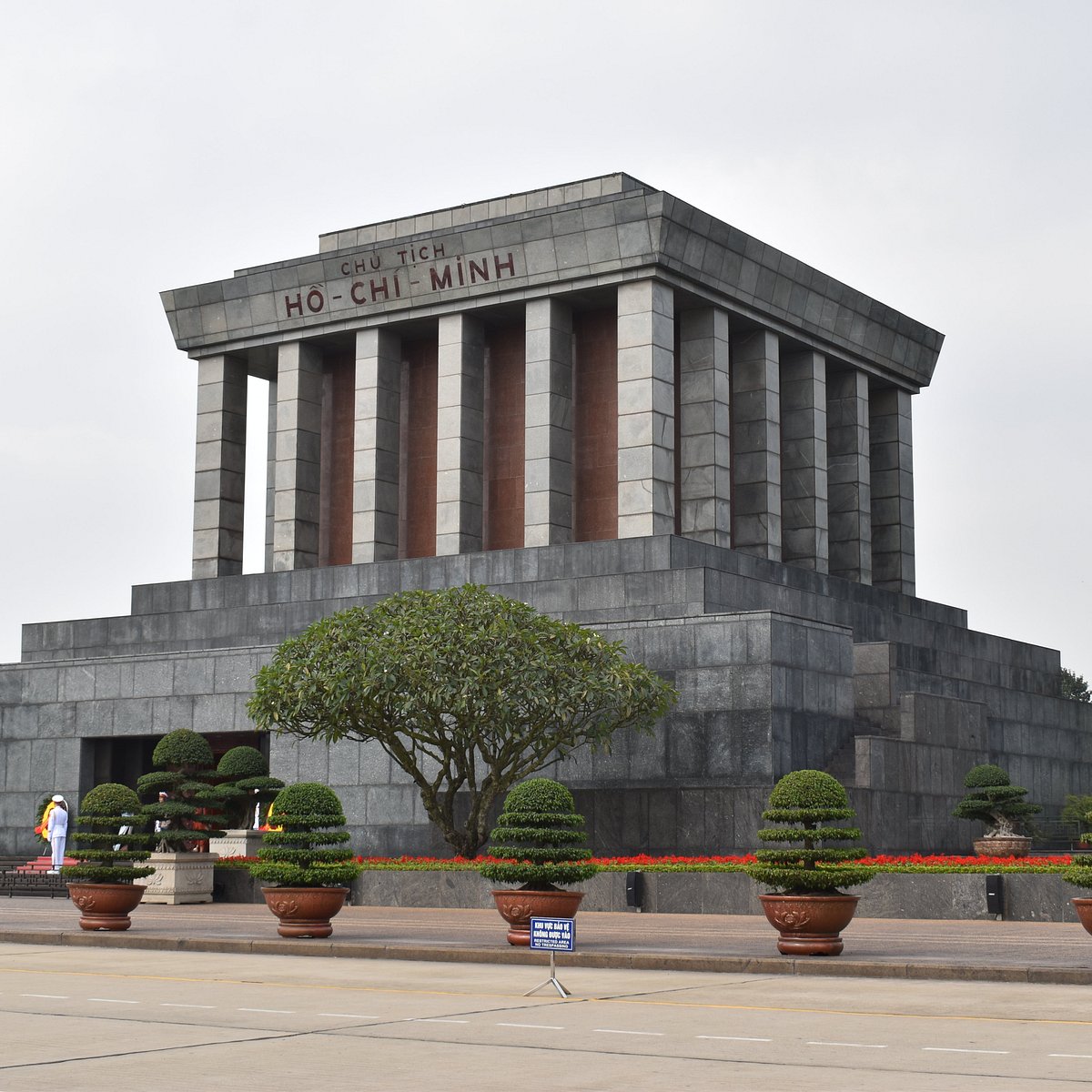
President Ho Chi Minh’s preserved body symbolizes the Vietnamese people’s deep respect and admiration for their leader
After President Ho Chi Minh passed away on September 3, 1969, steps were taken to preserve his body. Soviet and Vietnamese scientists worked together to embalm his remains, using expertise gained from embalming Lenin’s body. Ho Chi Minh’s body is now displayed in a glass coffin in the Ho Chi Minh Mausoleum in Hanoi, attracting thousands of visitors each year.
When the Soviet Union dissolved in 1991, the absence of Soviet scientists made preserving Ho Chi Minh’s body difficult. The Vietnamese government then negotiated with Russia to move the production of the preservation chemicals to Vietnam. The secret formula, previously kept by Russian scientists, was shared with Vietnam in 2004, allowing them to continue the preservation process.
President Ho Chi Minh’s preserved body symbolizes the Vietnamese people’s deep respect and admiration for their leader. It allows visitors to honor and remember this important figure in Vietnamese history.
2.3 Interior design and layout
The architecture of Ho Chi Minh’s Tomb is a solid square block, measuring 21.6 meters in height and 41.2 meters in width. The mausoleum has three layers and is built to withstand floods, bombings, and magnitude 7 earthquakes.
The mausoleum’s exterior is covered in gray granite and surrounded by marble columns. The words “CHỦ TỊCH HỒ-CHÍ-MINH” are written in crimson jade stone at the top. The mausoleum has 200 doors made from rare woods collected all over Vietnam.
The lobby is adorned with red and pink marble, featuring the words “Không có gì quý hơn Độc lập Tự do” (Nothing is more precious than Independence and Freedom) and President Ho Chi Minh’s gold-plated signature.
Inside, the room is covered with marble, housing President Ho Chi Minh’s body in a glass box on a stone pedestal. Four soldiers stand guard inside the room.
2.4 Surrounding areas and gardens
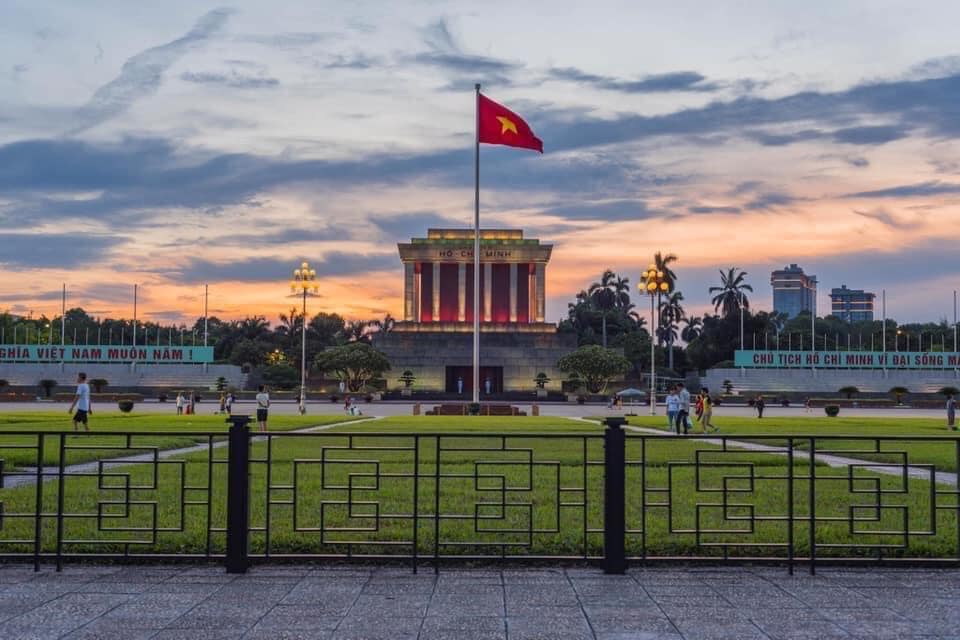
The area around the mausoleum is lush and green
A unique feature of the mausoleum is its surrounding scenery. The area around the mausoleum is lush and green, with over 250 species of plants. Each tree and flower holds special significance, connected to stories from Ho Chi Minh’s life.
III. Several notes for tourists visiting Ho Chi Minh Mausoleum

The Ho Chi Minh Mausoleum is located in Ba Dinh Square, Hanoi
3.1 Location: Hanoi, Vietnam
The Ho Chi Minh Mausoleum is located in Ba Dinh Square, Hanoi, Vietnam. It is situated at the heart of the city, near several other important landmarks such as the Presidential Palace, the One Pillar Pagoda, and the Ho Chi Minh Museum.
→ Discover the full SJourney itinerary from Hanoi to Ho Chi Minh City, with unique stops along the way HERE
3.2 Opening hours and best time to visit
– Ho Chi Minh Tomb is open in the mornings on Tuesday, Wednesday, Thursday, Saturday, and Sunday.
– The mausoleum is closed in the afternoons and all day on Mondays and Fridays.
– If May 19, September 2, or the 1st day of the Lunar New Year falls on a Monday or Friday, it remains open.
– The mausoleum closes for about 2 months each year for maintenance, usually from September to November.
– The exact maintenance schedule is announced in advance by the Mausoleum Management Board.
Visiting hours:
– Summer & Fall (April 1 – October 31): 7:30 a.m – 10:30 a.m on Tuesday – Thursday and Saturday – Sunday.
– Winter & Spring (November 1 – March 31): 8:00 a.m. – 11:00 a.m. on Tuesday – Thursday and Saturday – Sunday.
– On Saturdays, Sundays, and public holidays, visiting hours are extended by 30 minutes.
– Flag raising ceremony at 6 a.m and flag lowering ceremony at 9 p.m daily at Ba Dinh Square.
3.3 Entrance fees, Rules, and Regulations
There are some notices for you to know before getting into the Mausoleum:
– Entry ticket: VND25,000 (US$1.07) per person.
– Follow security check procedures for belongings.
– Remove your hat and hold it in your right hand.
– Maintain silence and refrain from touching the walls.
– Filming, photographing, or drawing in the room with Ho Chi Minh’s embalmed body is prohibited.
IV. Nearby Attractions to explore
Hanoi is brimming with cultural and historical treasures. Three standout sites below will offer you a unique glimpse into Vietnam’s heritage.
One Pillar Pagoda
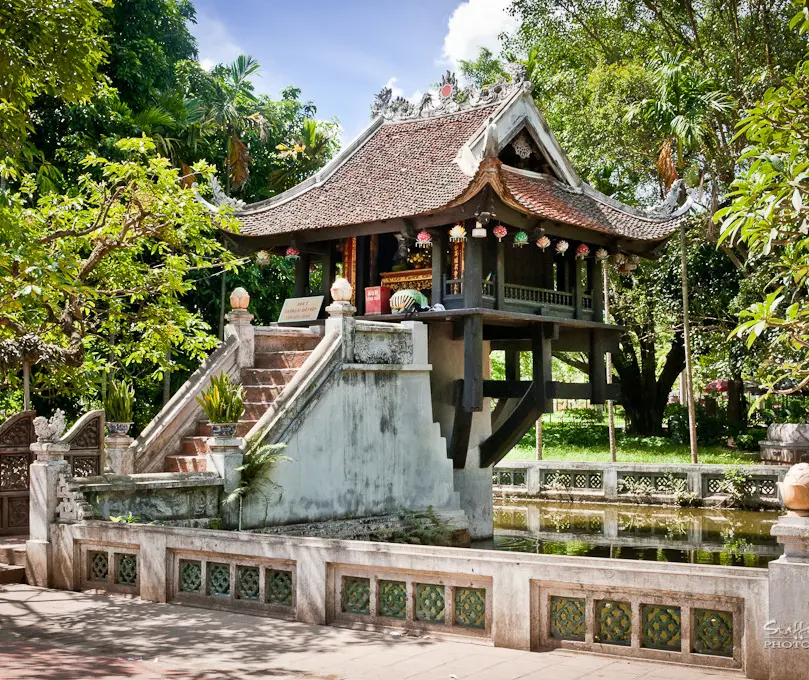
The One Pillar Pagoda which was built in 1049
The first mentioned is The One Pillar Pagoda which was built in 1049. It stands on a single stone pillar and looks like a lotus flower. This unique pagoda represents peace and is dedicated to the goddess of mercy.
Ho Chi Minh Museum
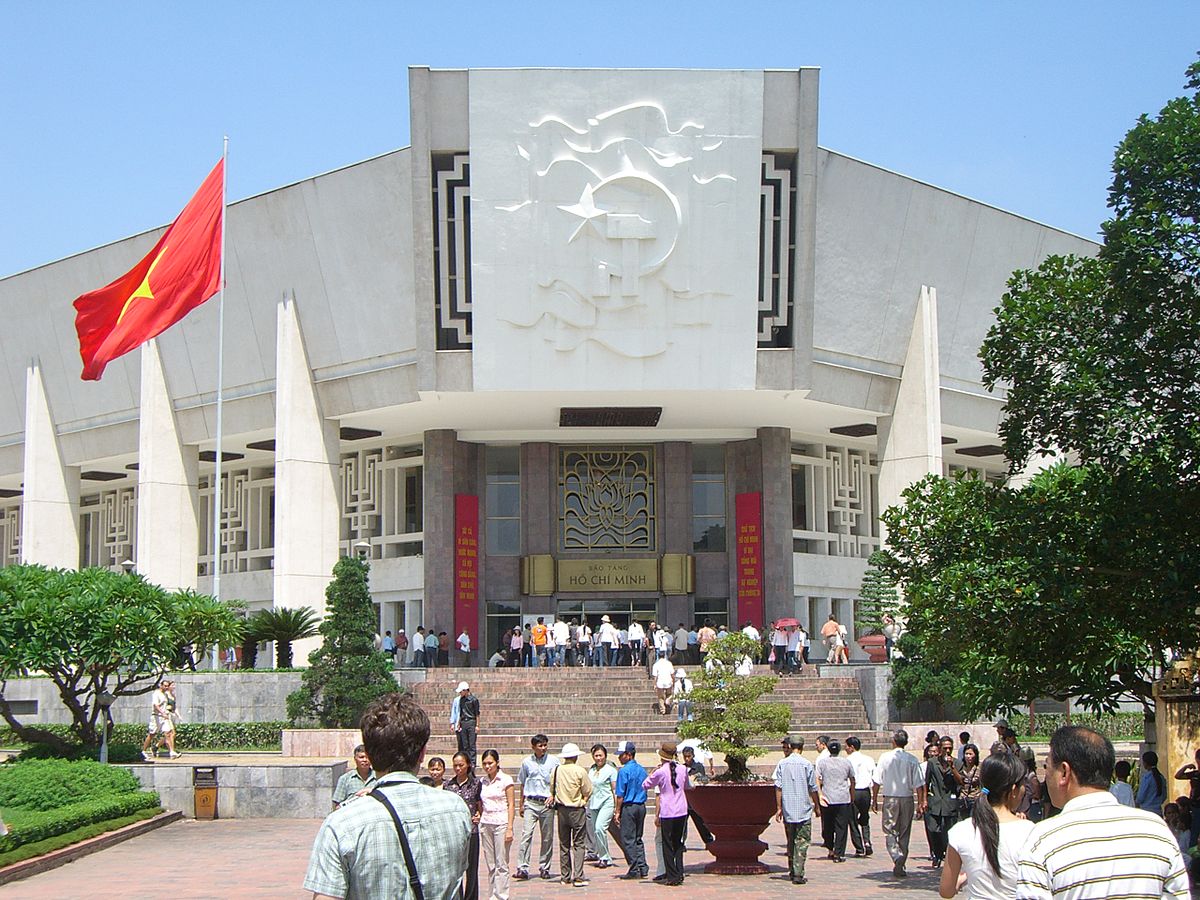
The Ho Chi Minh Museum displays artifacts and exhibits about Ho Chi Minh’s life
The Ho Chi Minh Museum is near Ho Chi Minh’s Mausoleum. It displays artifacts and exhibits about Ho Chi Minh’s life. The museum highlights his role in Vietnam’s history.
Presidential Palace
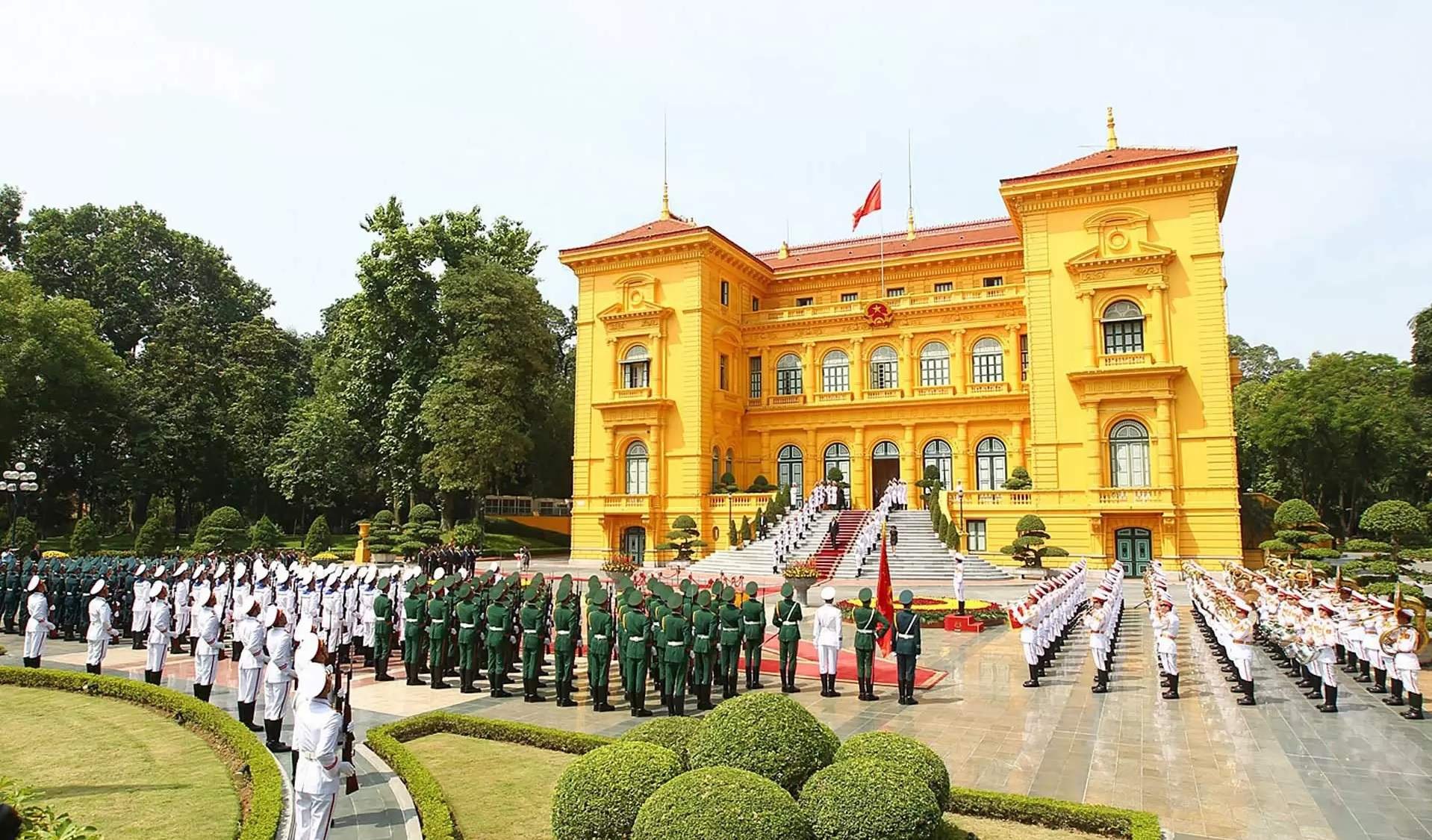
The Presidential Palace was built in the early 20th century
The last destination to explore is the Presidential Palace – a beautiful example of French colonial architecture. It was built in the early 20th century. Although it was meant for the French governor, it now hosts official events. Visitors can also see the simple stilt house where Ho Chi Minh lived.
V. Conclusion
Visiting the Ho Chi Minh Mausoleum is essential for understanding Vietnam’s history and honoring its revered leader. This iconic site in Hanoi provides a profound glimpse into the nation’s past and its enduring respect for Ho Chi Minh’s legacy.
SEE MORE:
Vietnam Luxury Train – The Ultimate Experience For All Tourists
Discover the World’s Best: Top 30 Luxury Trains


